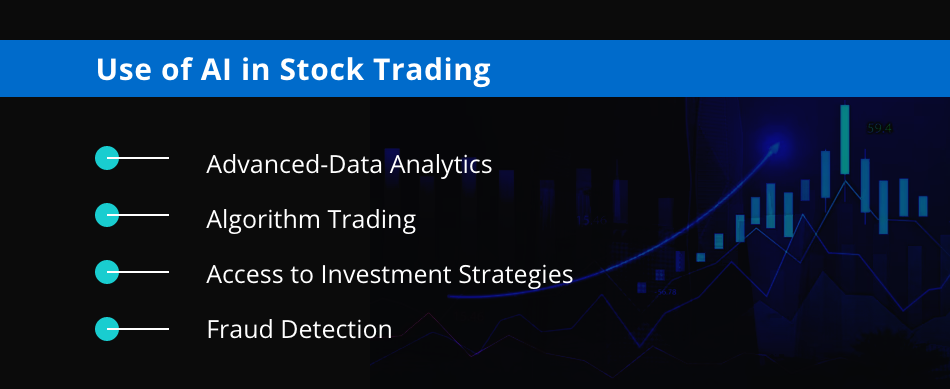20 Top Suggestions To Deciding On AI Stock Predictions Analysis Websites
20 Top Suggestions To Deciding On AI Stock Predictions Analysis Websites
Blog Article
Top 10 Tips To Evaluate The Ai And Machine Learning Models In Ai Software For Predicting And Analysing Trading Stocks
The AI and machine (ML) model utilized by stock trading platforms and prediction platforms must be assessed to ensure that the insights they provide are accurate and reliable. They must also be relevant and practical. Models that have been poor-designed or over-hyped can lead to inaccurate forecasts and financial losses. We have compiled our top 10 tips on how to evaluate AI/ML-based platforms.
1. Understanding the model's goal and the way to approach
A clear objective: determine whether the model was designed for short-term trading, long-term investing, sentiment analysis, or risk management.
Algorithm disclosure: Check whether the platform is transparent about the algorithms it employs (e.g. neural networks and reinforcement learning).
Customization: See whether the model could be adjusted to your specific investment strategy or risk tolerance.
2. Measuring model performance metrics
Accuracy Verify the model's predictive accuracy. Don't solely rely on this measure, however, because it can be inaccurate.
Recall and precision (or accuracy): Determine how well your model can discern between real positives - e.g., accurately predicted price movements and false positives.
Risk-adjusted Returns: Determine the model's predictions if they yield profitable trades taking risk into consideration (e.g. Sharpe or Sortino ratio).
3. Test your model with backtesting
Performance historical: Test the model with previous data and check how it performs in the past market conditions.
Testing outside of sample: Make sure the model is tested using data it was not used to train on in order to avoid overfitting.
Scenario Analysis: Check the model's performance under different market conditions.
4. Check for Overfitting
Overfitting signals: Watch out for models that perform extraordinarily well with data training but poorly on data that isn't seen.
Regularization: Find out if the platform is using regularization methods such as L1/L2 and dropouts to prevent excessive fitting.
Cross-validation - Ensure that the platform utilizes cross-validation in order to assess the generalizability of your model.
5. Assess Feature Engineering
Relevant Features: Check to see whether the model includes significant features. (e.g. volume and technical indicators, prices as well as sentiment data).
The selection of features should be sure that the platform selects features that have statistical value and avoid unnecessary or redundant data.
Dynamic updates of features Check to see how the model adapts itself to new features, or to changes in the market.
6. Evaluate Model Explainability
Interpretability: Make sure the model is clear in its reasons for its predictions (e.g. SHAP values, importance of the features).
Black-box Models: Be wary when platforms use complex models with no explanation tools (e.g. Deep Neural Networks).
User-friendly insights: Check if the platform gives actionable insight in a format that traders can understand and utilize.
7. Examine the model Adaptability
Market fluctuations: See if your model can adapt to market changes (e.g. new laws, economic shifts or black-swan events).
Make sure that the model is continuously learning. The platform must update the model often with new data.
Feedback loops. Ensure you incorporate the feedback of users or actual results into the model to improve it.
8. Check for Bias or Fairness
Data bias: Ensure that the data used for training is a true representation of the market and without biases.
Model bias - Determine whether your platform is actively monitoring the biases and reduces them within the model predictions.
Fairness - Check that the model you choose to use isn't biased in favor of or against specific sector or stocks.
9. Calculate Computational Efficient
Speed: See if the model generates predictions in real-time, or at a low latency. This is especially important for traders with high frequency.
Scalability Test the platform's capacity to handle large amounts of data and multiple users without performance loss.
Utilization of resources: Determine if the model has been optimized to utilize computational resources efficiently (e.g., GPU/TPU utilization).
Review Transparency & Accountability
Model documentation: Ensure the platform is able to provide detailed documentation on the model's structure as well as the training process and limitations.
Third-party audits: Determine whether the model has been independently verified or audited by third parties.
Check if there are mechanisms that can detect mistakes or failures in models.
Bonus Tips
Reviews of users and Case Studies: Review user feedback, and case studies to determine the real-world performance.
Trial period: Use the demo or trial for free to try out the model and its predictions.
Customer Support: Ensure that the platform provides robust technical support or model-specific assistance.
Following these tips can help you assess the AI models and ML models that are available on platforms that predict stocks. You will be able to determine whether they are trustworthy and reliable. They must also be aligned with your trading objectives. Follow the recommended inciteai.com AI stock app for blog recommendations including ai trading, ai investing platform, best ai stock, ai stock trading app, best ai stock, ai investment app, ai stock market, ai investing, ai chart analysis, ai investment platform and more.
Top 10 Tips When Assessing The Ai Trading Platforms' Educational Resources
Reviewing the educational tools offered by AI-driven stock prediction systems and trading platforms is essential for those who use them to learn how to use the platform, analyze results, and make educated trading choices. Here are ten suggestions on how to evaluate the usefulness and effectiveness of these instruments:
1. Comprehensive Tutorials and Guides
Tip - Check to see whether the platform offers instructions and step-by-step tutorials for both novices and advanced users.
The reason: Clear and concise instructions assist users navigate the platform and comprehend its features.
2. Video Demos and Webinars
You can also look for webinars, training sessions in real time or videos of demonstrations.
Why Visual and Interactive content can aid in understanding complex concepts.
3. Glossary of the terms
Tips: Make sure the website has a glossary with definitions and key terms related to AI finance, AI, and many other areas.
What is the reason? It helps all users, but particularly novices to the platform understand terminology.
4. Case Studies and Real-World Examples
Tip. Verify that the platform has case studies that show how AI models were applied to real-world scenarios.
What's the reason? The platform's capabilities and their effectiveness are shown through practical examples.
5. Interactive Learning Tools
TIP: Look for interactive features, such as games and sandboxes.
The reason: Interactive tools allow users to practice and test knowledge without risking any real money.
6. Regularly Updated Content
Tip: Assess whether the educational materials are regularly updated to incorporate new features, market trends or changes to the regulations.
Why: Outdated data can cause misinterpretations or improper usage of the platform.
7. Community Forums & Support
Find active forums for community members and support groups in which you can post questions of other members or share ideas.
Reasons: Expert advice and peer support can improve learning and solve problems.
8. Programs of Accreditation or Certification
Find out if the school offers accredited or certified classes.
What is the reason? Recognition of formality can boost credibility and motivate learners to pursue their education.
9. Accessibility and user-friendliness
Tip: Evaluate the ease of access and user-friendly the educational resources are (e.g. portable-friendly PDFs, downloadable PDFs).
Reason: The ease of access lets users learn at their own pace.
10. Feedback Mechanisms for Educational Materials
Find out if students have feedback on the instructional materials.
The reason is that the feedback of users helps to improve the quality and relevancy of the materials.
Learn in a variety formats
The platform should provide a wide range of learning options (e.g. audio, video and texts) to meet the needs of a variety of learners.
When you take a close look at these elements by evaluating these aspects carefully, you can determine if you are satisfied with the AI stock trading platform and prediction software provide you with a comprehensive educational material which will allow you to fully utilize their potential and make educated decisions. Read the recommended best ai stocks hints for more examples including ai options, ai in stock market, ai stock price prediction, ai in stock market, ai stock investing, how to use ai for copyright trading, ai stock investing, best ai stocks, ai for trading stocks, best ai stocks to buy now and more.